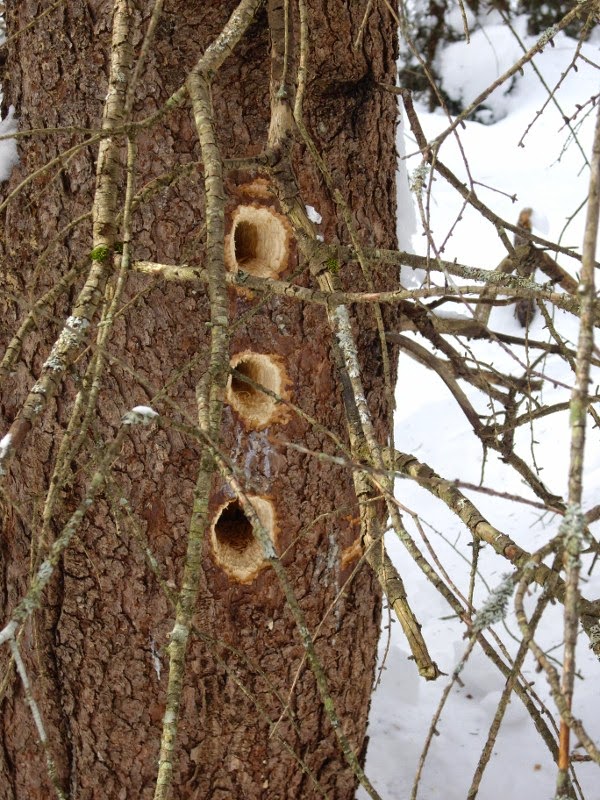** Dave Christie points out another indication of BOBCATS [Lynx roux]
possibly having problems getting sufficient food. Steve Marshall called him on
Sunday to report that in mid-afternoon a Bobcat crossed Mary's Point Road near
Harvey Corner, went through his field and disappeared into some woodland at the
edge of the Shepody Marsh. He was surprised to see it in broad daylight. The
deep, soft snow would be giving Bobcats a mobility challenge, and also last
year’s young have recently been sent on their own by their mothers, to make it
even more of a challenge for them.
** The annual Nature Moncton BIRD FEEDER TOUR is set to take place next
Saturday, March 7. More details will come during the week. Plans that I am aware
of at the moment, are to gather at the northwest corner of the Coliseum parking
lot at 9 a.m. and to head out to Jean Renton’s very lively bird feeder yard for
the first stop. Rumours have it not to have any breakfast before arriving at
Jean’s, as participants from other years know that what haute cuisine often
awaits in Jean’s kitchen.
** In follow-up on the wooded area that Brian Coyle and I explored on
Saturday, Brian return there on Sunday, going deeper into the area. He spotted a
COMMON RAVEN [Grand Corbeau] carrying a stick, along with doing its barrel-roll
ritual, a great sign of days ahead. He also came across lots more COYOTE
[Coyote] trails, and found one relatively fresh scat that indicated a recent
meal of meat. Some long hairs in it suggested WHITE-TAILED DEER [Cerf de
Virginie] as prey.
He also came across a group of alders and hawthorn shrubs that had a
surprising number of RUFFED GROUSE [Gélinotte huppée] snow holes, more than we
had seen the day before. The grouse population in that area must be having a
very good winter. While we there on Saturday we came across some interesting
feathers that we could not identify. Dave Christie felt they were RING-NECKED
PHEASANT [Faisan de Colchide] scapular feathers, and had a road-killed pheasant
in his freezer to show it. We were surprised that a pheasant would be in that
wooded section, in such deep snow with no tracks, but the feathers were there.
It did not appear to be prey as only a small number of this type of feather were
present.
Nelson Poirier,
Nature Moncton
COYOTE SCAT.MARCH 1, 2015.BRIAN COYLE
RING-NECKED PHEASANT SCAPULAR FEATHERS.FEB 28, 2015.NELSON POIRIER (2)
RING-NECKED PHEASANT (ROADKILL) TO SHOW SCAPULAR FEATHERS.MARCH 1, 2015.DAVE CHRISTIE_
WOODPECKER EXCAVATIONS.MARCH 1, 2015.BRIAN COYLE

.JPG)
%2BTO%2BSHOW%2BSCAPULAR%2BFEATHERS.MARCH%2B1%2C%2B2015.DAVE%2BCHRISTIE_.jpg)
